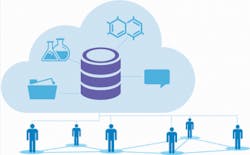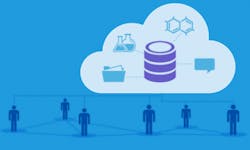Increasingly, research organizations in the life sciences, consumer packaged goods,
energy/process/utilities and other science-based industries are moving research informatics to the cloud—especially organizations looking to increase operational agility, reduce TCO and improve collaboration.
Why? Simple. Companies are looking to lower costs and become more productive in operational environments where IT infrastructure is expensive and not viewed as a core competency. They may also be tasked with getting projects up and running quickly. As a result of these critical business issues, they are taking a cloud-first approach to moving their informatics capabilities to the next level. Not only does the cloud accelerate the provisioning of computer resources, it also helps companies roll out new offerings quickly—accelerating their business response to changing opportunities and improving their competitive position.
Some companies are requiring up to 80% reductions in capital and operating budgets in response to economic pressures. As a result, they are exploring cloud computing as a way to lower costs by eliminating up-front capital investments and ongoing maintenance costs associated with on-premises solutions. While point solutions are no longer sustainable, there is also low tolerance for software complexity and increased pressure to consolidate software vendors. The cloud eliminates the need for companies to buy, deploy and maintain IT infrastructure and application software. It is a feasible and attractive strategy for lowering TCO today.
The upside of the cloud for research informatics
The cloud enables organizations to set up a robust collaboration workspace quickly and easily with minimal IT support. The system is available anywhere, anytime—and you only pay for what you need to use. ISO-27001 accreditation is an essential best-practice standard for information-security management; it provides a high level of assurance that confidentialA 2016 IDG survey of IT and business decision-makers found that 68% of respondents intend to investigate or deploy cloud-analytics solutions over the coming year. Respondents with currently deployed cloud-analytics solutions cited the advantages of lower up-front costs (60%) over on-premises solutions. They also cited greater agility and faster time to market (61%), more rapid and cost-effective scaling for large data sets (60%) and improved self-service capabilities for non-technical users (51%).
To learn more about moving research informatics to the cloud—and what a successful cloud solution can look like—download the white paper from Dassault Systèmes BIOVIA.






